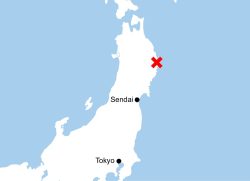Record Number of Candidates Likely to Run in Japan Election for LDP President; Some Suggest Weakened Faction Control Might be Reason for Record Number

The Liberal Democratic Party headquarters building
1:00 JST, August 24, 2024
A record number of candidates are expected to run in the ruling Liberal Democratic Party’s presidential election on Sept. 27, partly due to factions having less control over lawmakers.
At least six candidates are expected to run as they are almost certain to secure the minimum required 20 recommendations from LDP lawmakers, exceeding the previous record of five candidates.
Partly due to factions having less control, it is said that votes from rank-and-file party members will become more important in election campaigns than before.
Former economic security minister Takayuki Kobayashi, 49, was the first to announce his candidacy for LDP president on Monday.
Former LDP Secretary General Shigeru Ishiba, 67, digital minister Taro Kono, 61, and Chief Cabinet Secretary Yoshimasa Hayashi, 63, are poised to formally announce their candidacies soon. Former Environment Minister Shinjiro Koizumi, 43, is expected to announce his candidacy as early as Aug. 30.
Economic security minister Sanae Takaichi, 63, is said to be almost certain to secure the necessary number of recommendations.
Receiving recommendations has been necessary to run in the LDP presidential election since 1972. Since then, the most number of candidates running for LDP president has been five, in 2008 and 2012, when the incumbent did not run.
The number of candidates running in the Sept. 27 election is expected to increase as LDP Secretary General Toshimitsu Motegi, 68, who is interested in the post, is said to be able to secure the 20 recommendations.
The flood of candidates stems from the factions’ power weakening. Previously, they held a tight grip over who would be allowed to run and who their members voted for, but that has changed since most factions were effectively eliminated following the LDP’s funds scandal.
In the past, there were cases in which multiple factions worked together to force a candidate out of the race to reduce competition.
Some LDP members hope that the party’s profile will be raised as more candidates run in the race, leading to increased media exposure to provide a foothold for the LDP to regain support.
However, with each candidate receiving at least 20 recommendations, it has become difficult for them to get enough votes from Diet members to secure a win.
As a result, some observers have said that rank-and-file party members and affiliated group members’ votes, which will be adjusted to equal the number of Diet members’ votes, will determine who will win the race.
Related Tags
"Politics" POPULAR ARTICLE
-

Japan to Support Central Asian Logistics Route That Bypasses Russia, Plan to Be Part of Upcoming Summit in Tokyo
-

Japanese Language Requirement Eyed for Permanent Residency Status; LDP Plans Revisions of Laws on Foreigners
-
-250x167.jpg)
Japan Eyes Plan to Accept Up To 1.23 Mil. Foreign Workers by End of Fiscal 2028
-

AI-Driven ‘Zero Clicks’ Phenomenon Threatens Democracy; News Outlets Must Be Able to Recover Costs, Stay Independent
-

Japanese Public, Private Sectors to Partner on ¥3 Tril. Project to Develop Domestic AI, SoftBank to Be Key Firm Involved
JN ACCESS RANKING
-

As Chinese Tourists Shun Japan, Hotels and Stores Suffer
-

Osaka-Kansai Expo’s Economic Impact Estimated at ¥3.6 Trillion, Takes Actual Visitor Numbers into Account
-

Japan Govt Adopts Measures to Curb Mega Solar Power Plant Projects Amid Environmental Concerns
-

BOJ Gov. Ueda: Highly Likely Mechanism for Rising Wages, Prices Will Be Maintained
-

Economic Security Panels Debate Supply Chains, Rare Earths; Participants Emphasize Importance of Cooperation Among Allies

























